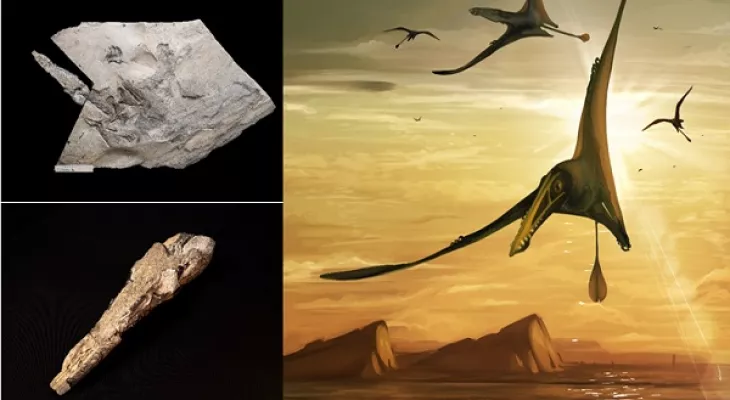Rare Flying Reptile Fossil Unveiled In Scotland

Edinburgh (Scotland), Feb 23: An extremely rare fossil of a pterodactyl – a huge flying reptile from the Jurassic period – has been unveiled at the National Museum of Scotland five years after it was first discovered by a student, reports The Independent. The pterosaur, as it is officially called, had a wingspan of about 8 feet (2.5 meters), and lived roughly 170 million years ago during the Jurassic Period. The reptile is known as the biggest flying creature that had inhabited Earth to that point in time.
The fossil, which was discovered during a National Geographic Society-funded excavation on the Isle of Skye in 2017, was unveiled on Tuesday at the museum. Amelia Penny, a PhD student on a paleontology field expedition in 2017, was the one who had first spotted a fossilized jaw jutting from rock on Scotland’s Isle of Skye. “As we started to remove it, we realized that the jaw led to a head, which led to a gorgeous skeleton in the rocks,” said Steve Brusatte, a vertebrate paleontologist, who oversaw the 2017 field work. Examination of the skeleton followed, at the University of Edinburgh, with the team’s findings now published in the Current Biology journal, reports The Independent.
“The finding has pieced together a huge gap in fossil records for us,” Natalia Jagielska, lead author of the paper published in Current Biology said. “Britain hasn’t seen this kind of preservation of pterosaurs in 200 years. It’s a discovery of the century, this doesn’t really happen.” The pterosaur has since been given the Gaelic name Dearc sgiathanach, which translates as “winged reptile”, and also references the Isle of Skye, whose Gaelic name means “the winged isle”. “Dearc is the biggest pterosaur we know from the Jurassic period and that tells us that pterosaurs got larger much earlier than we thought, long before the Cretaceous period when they were competing with birds, and that’s hugely significant,” Prof Brusatte said.






